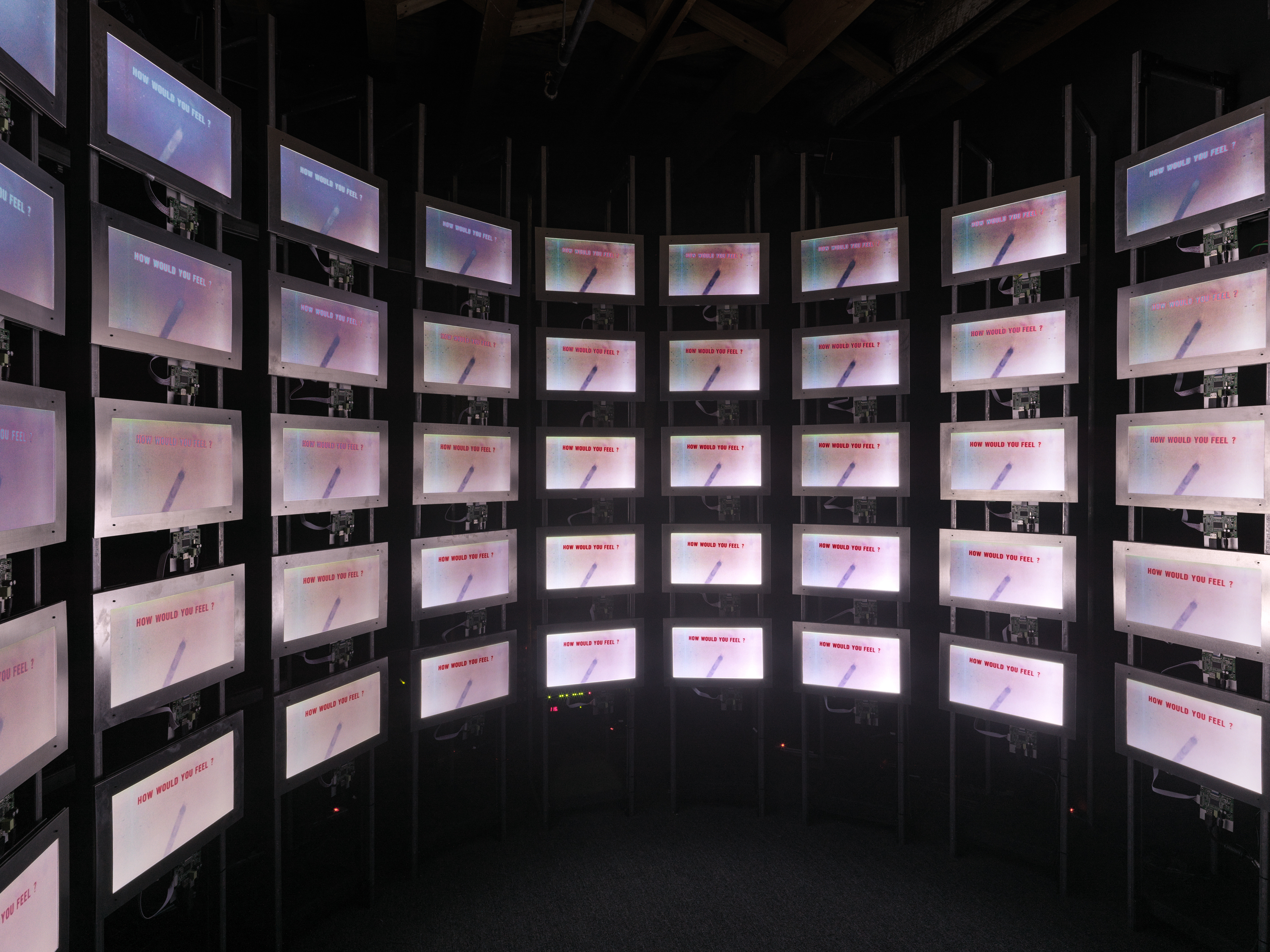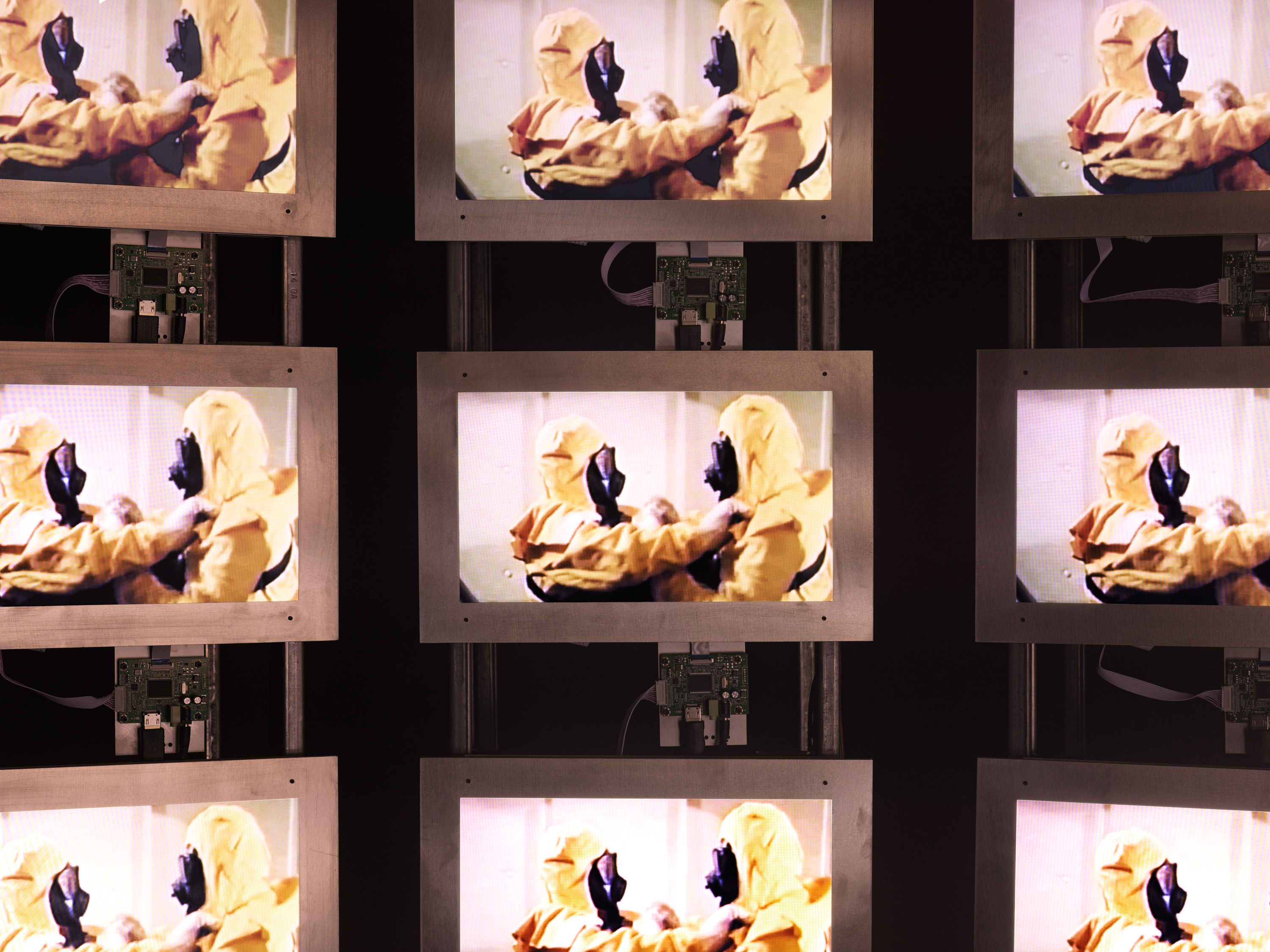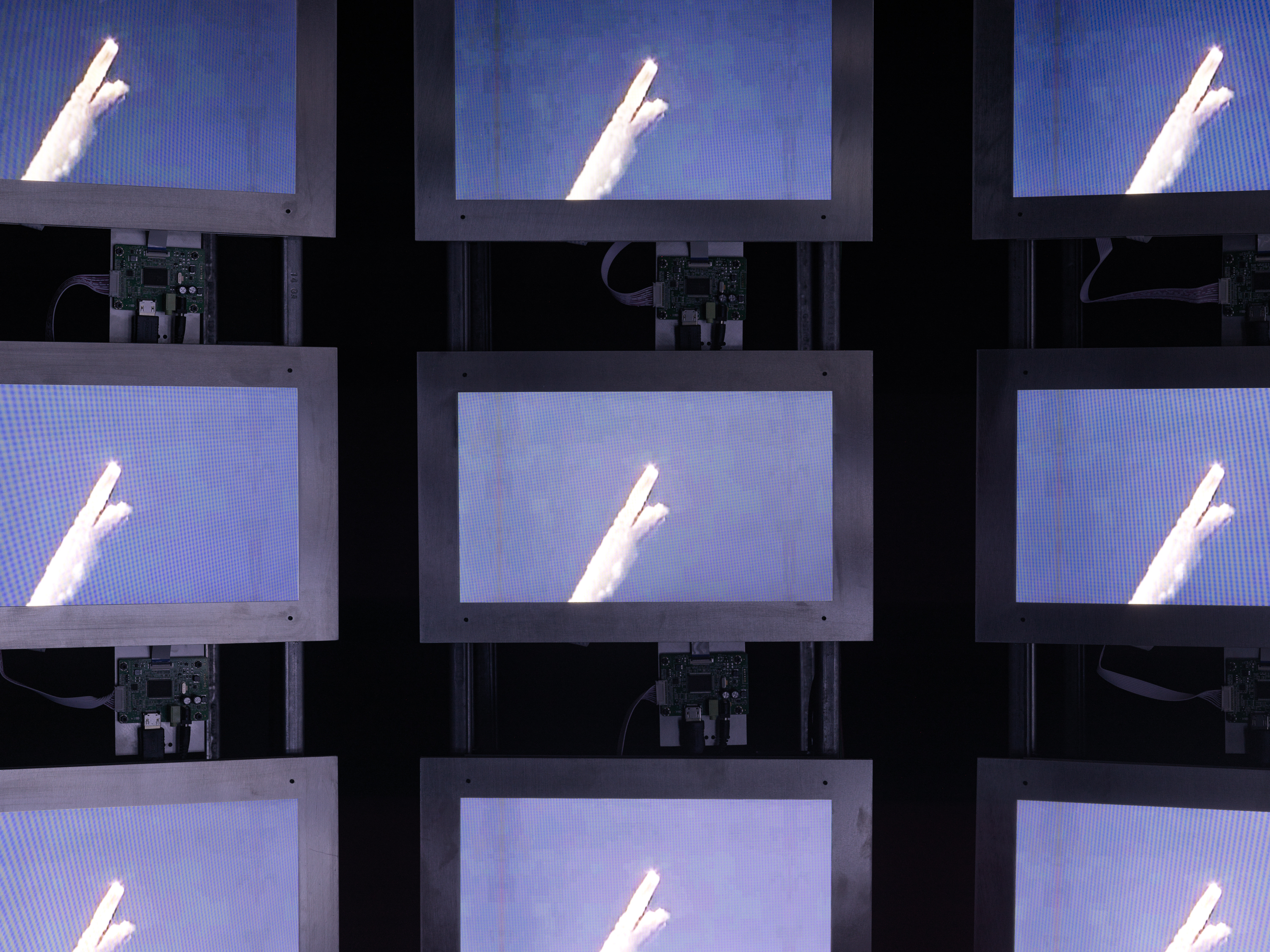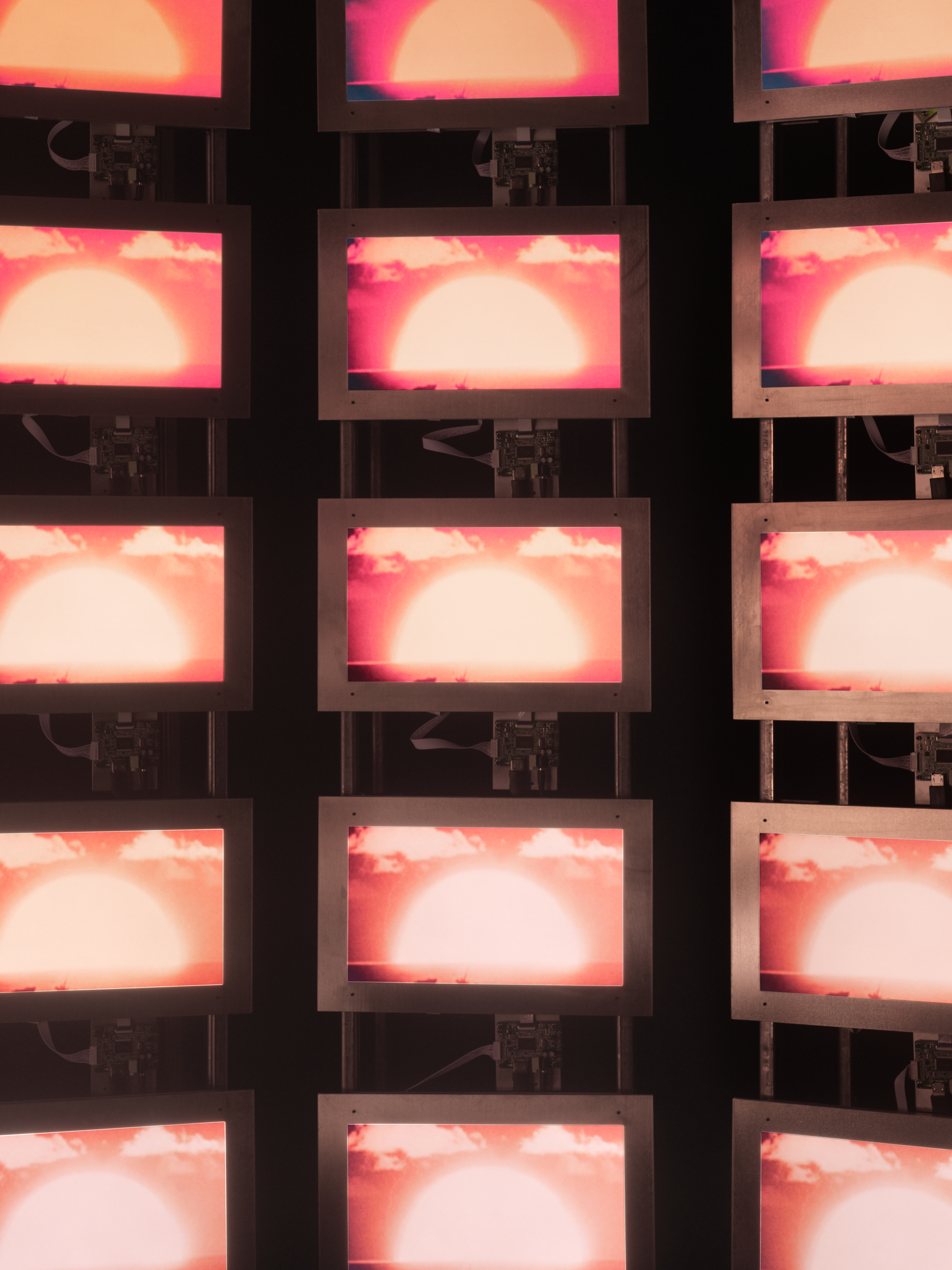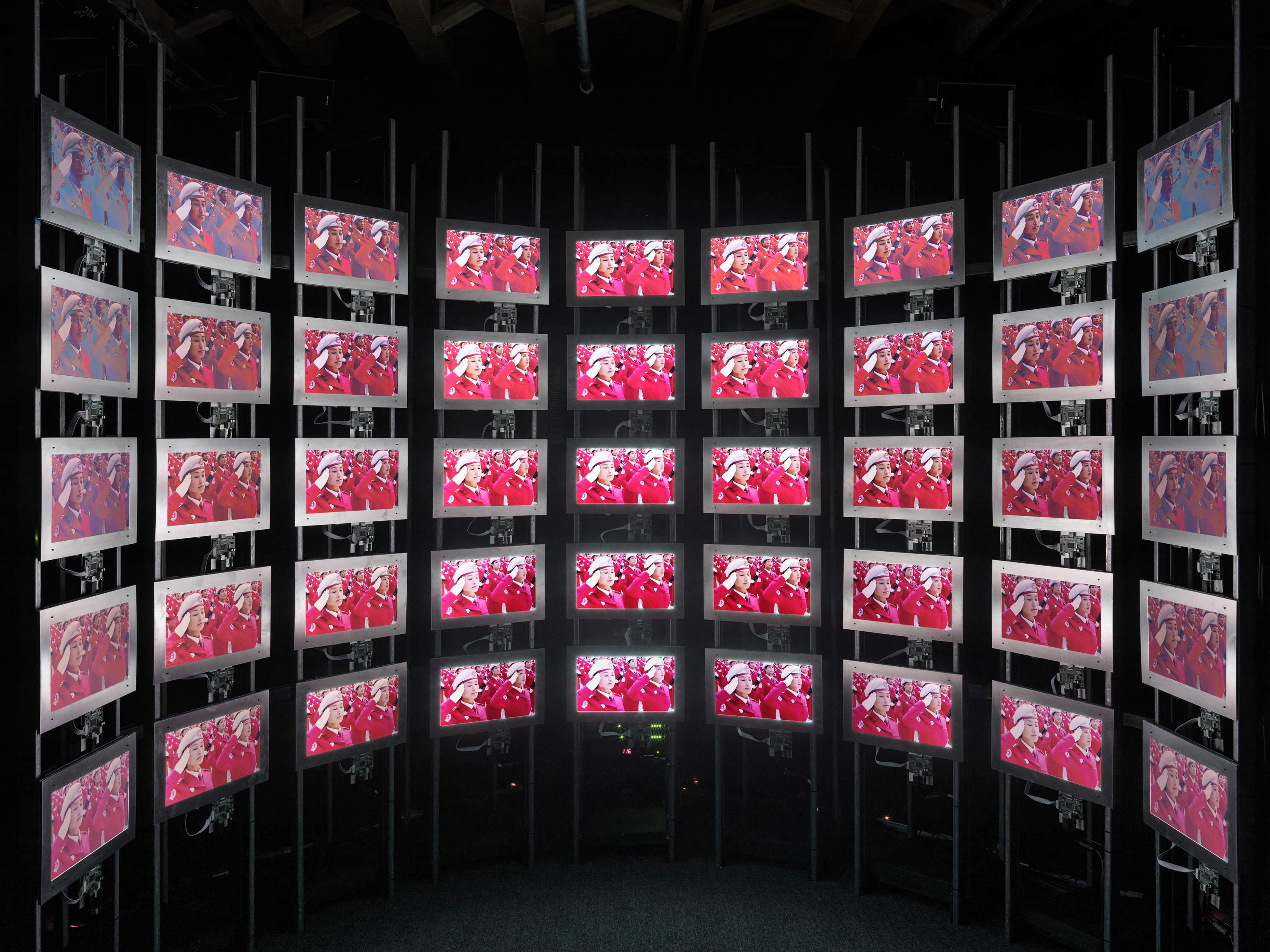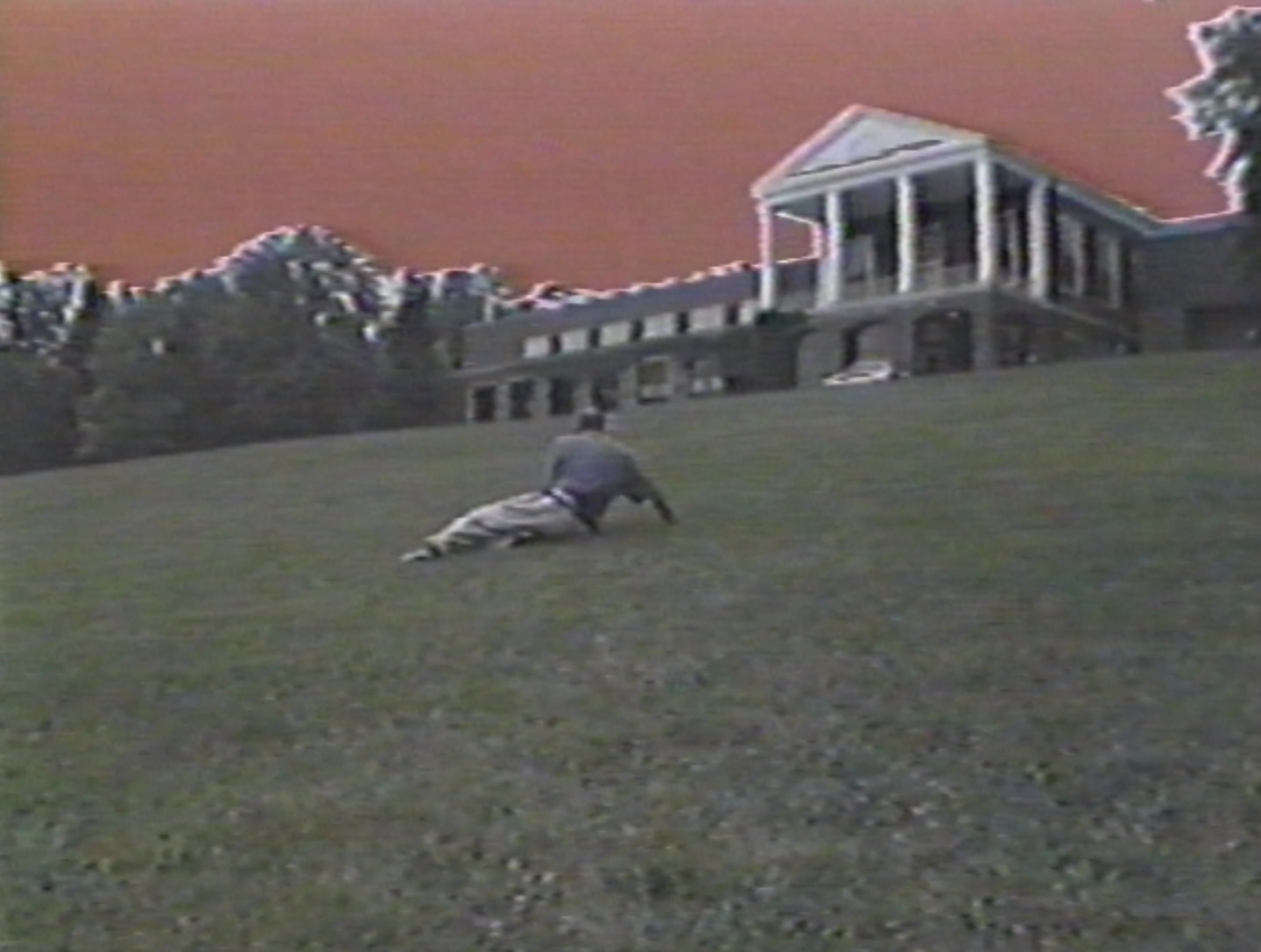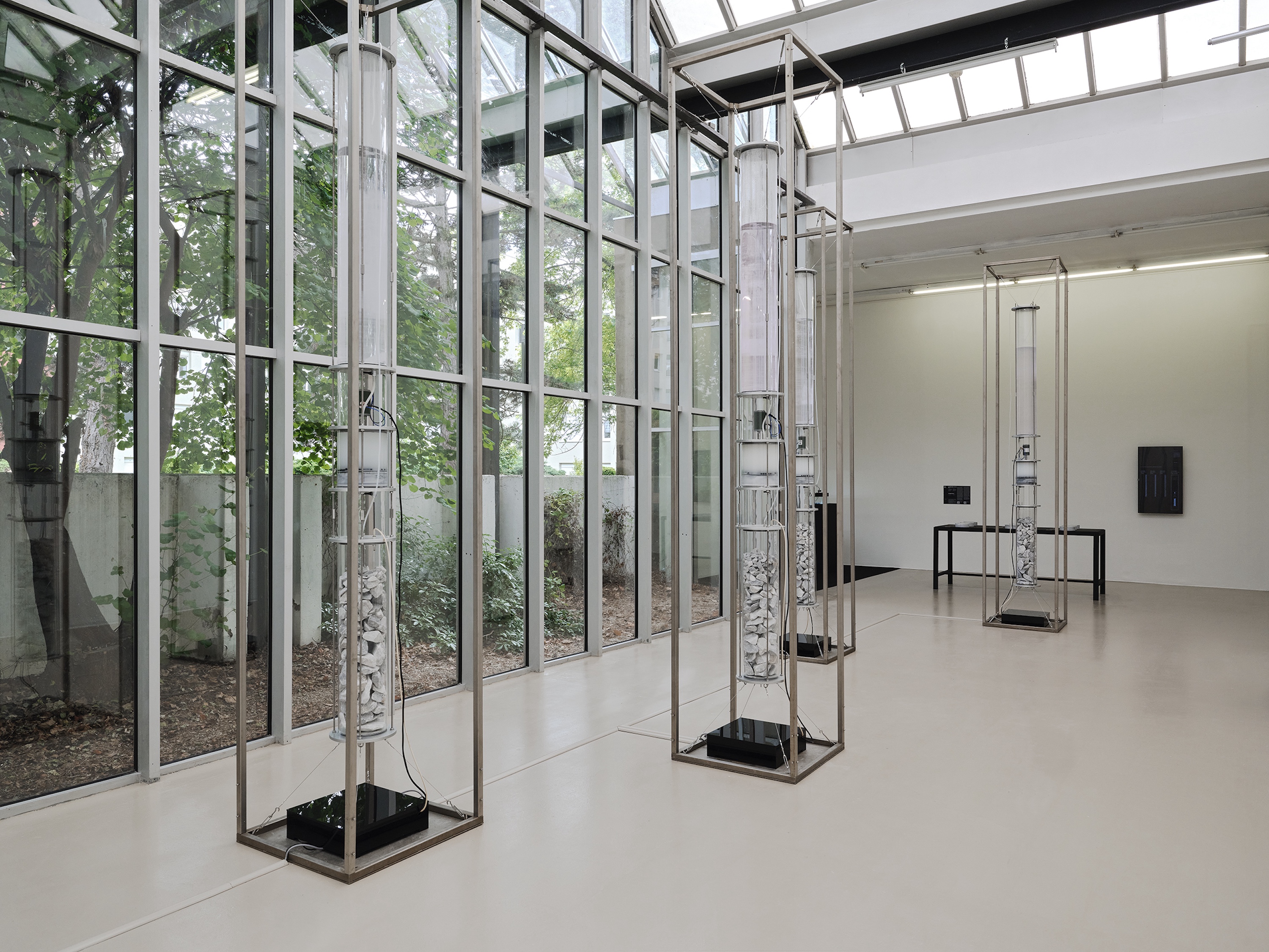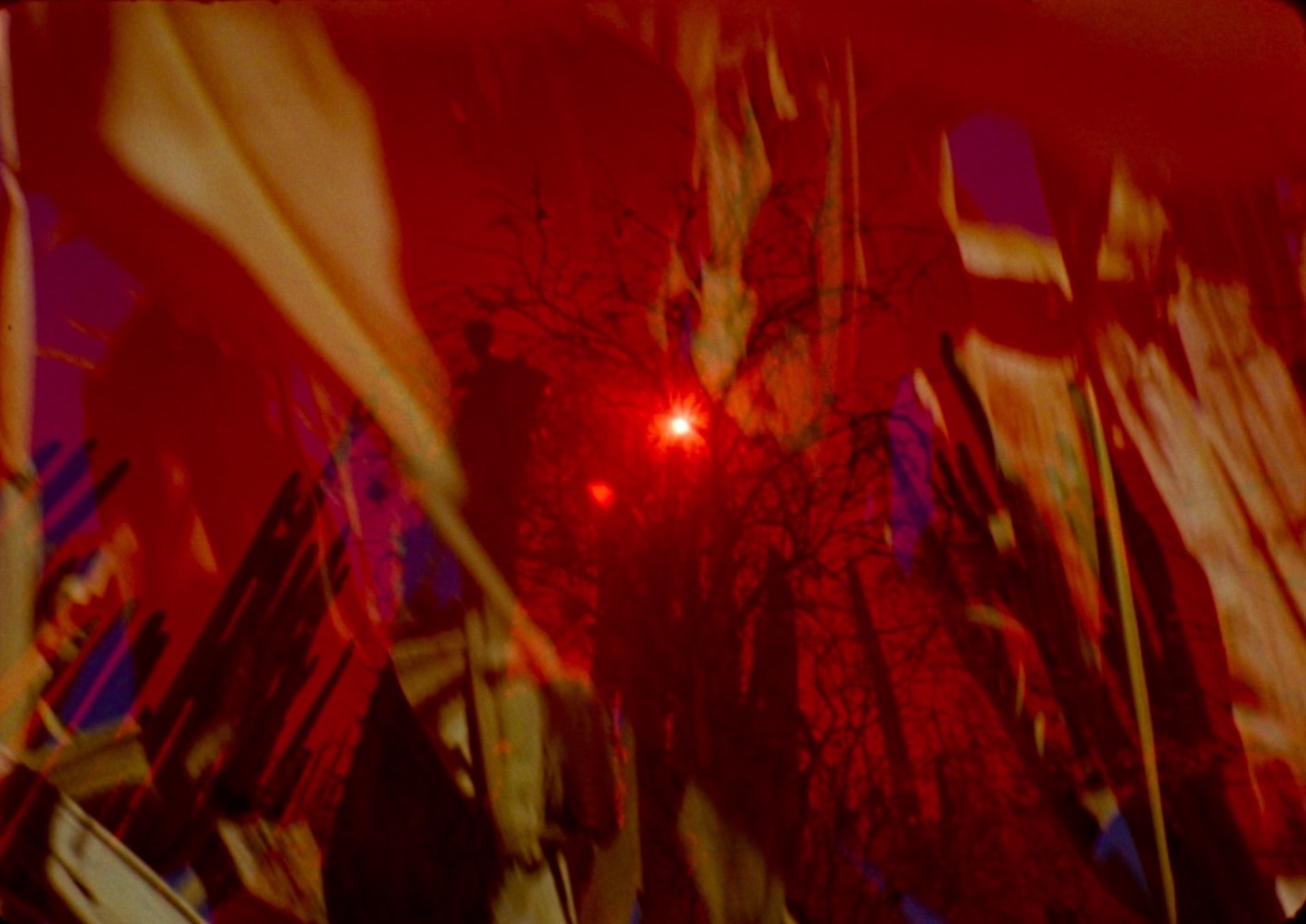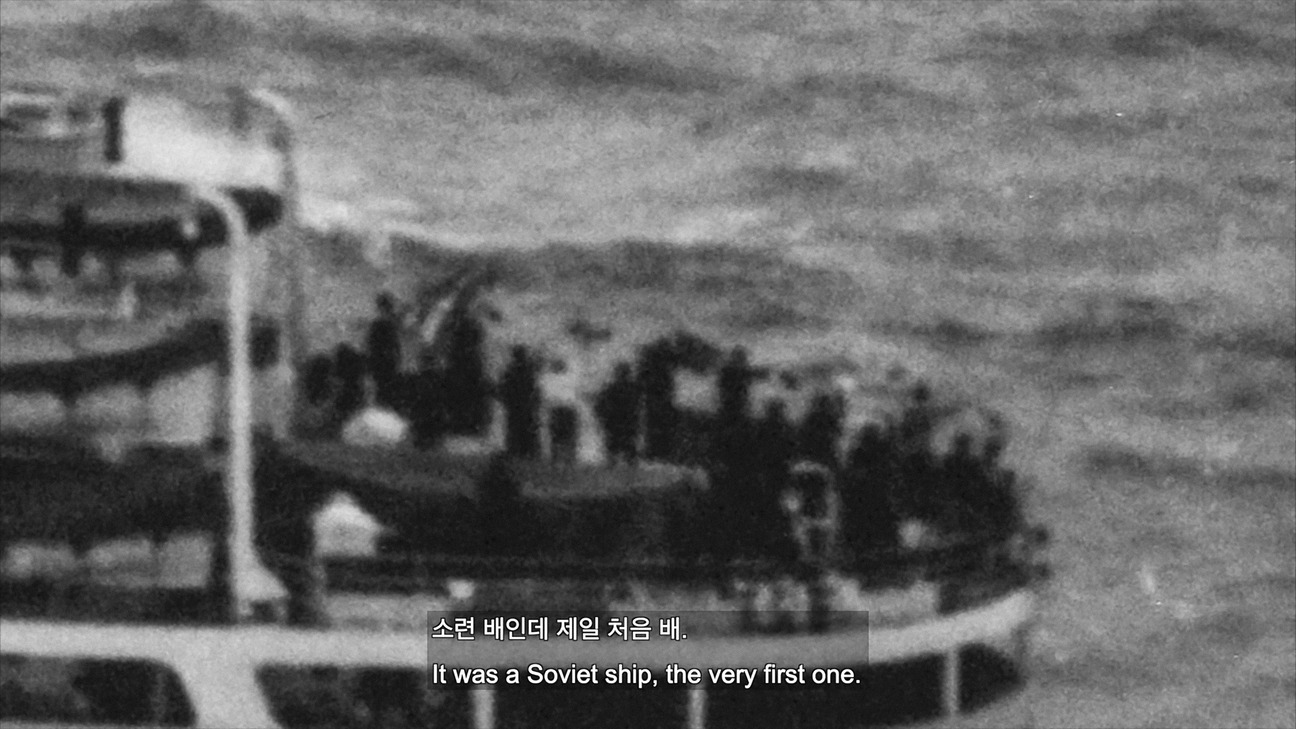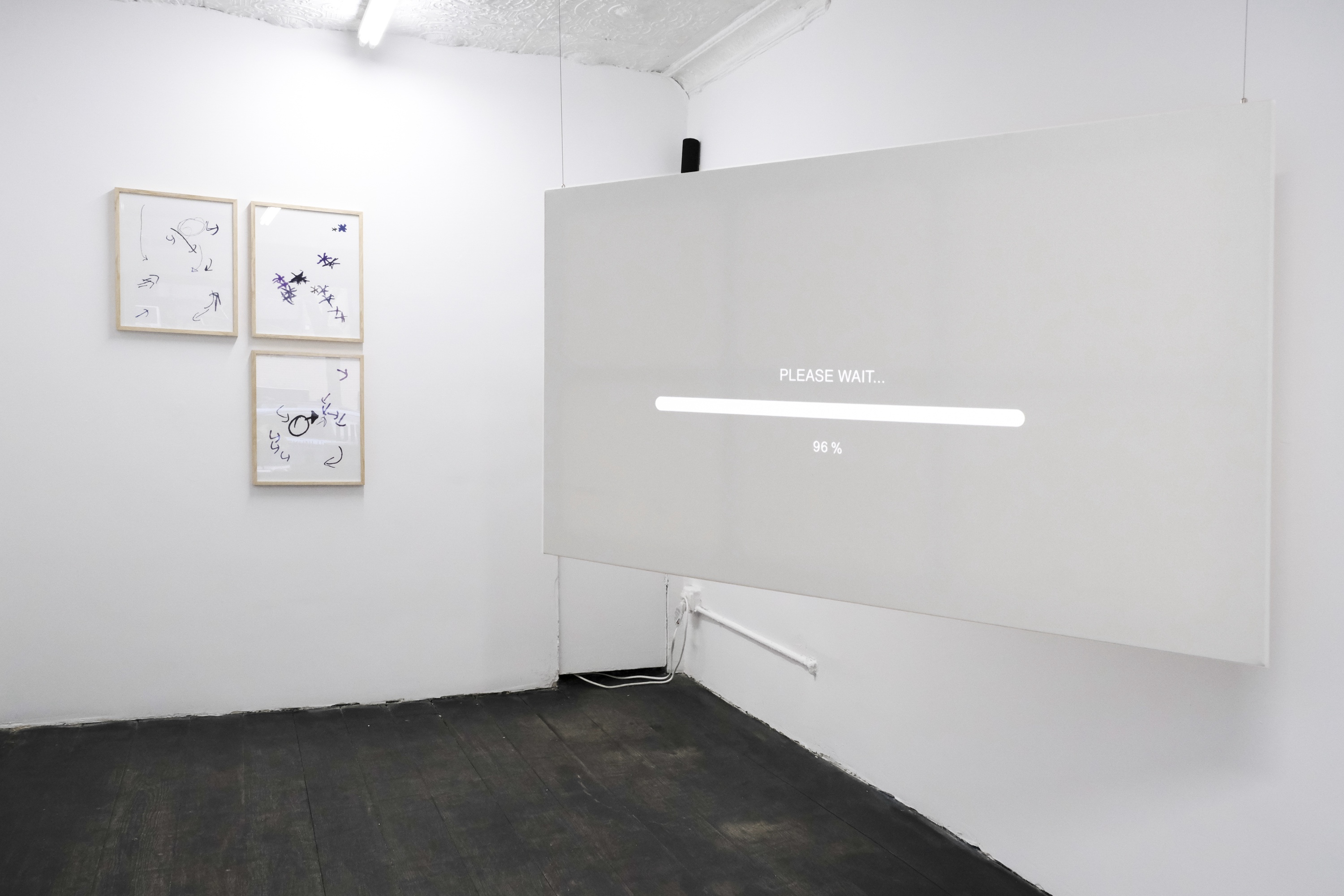March 19–May 23, 2021
When an atomic mushroom cloud is reduced to an image, it is more likely to inspire awe than terror. This is the paradox that haunts Smriti Keshari and Eric Schlosser’s the bomb (2021), an immersive adaptation of a 2016 film that transmutes violence into spectacle in an attempt to teach its audience a lesson. These sensational images, though ostensibly employed in the service of nuclear disarmament, instead exaggerate the perverse glamor of mass destruction.
At Pioneer Works, the black-box installation resembles a military command center, curved to simulate the enclosure of a cockpit. The effect calls to mind Charles Eames’s Glimpses of the U.S.A., which collaged thousands of images of “typical” American life into 13 minutes and projected them onto seven massive screens suspended within a geodesic dome. The reference to Eames’s consumerist propaganda, famously displayed at the American National Exhibition in Moscow in 1959, sets a prescient tone for a film that spends nearly half of its 59-minute runtime rehashing Cold War talking points. Playing through five rows of nine LED screens, the thematically grouped footage follows a loose chronological cycle: contemporary displays of military might; US propaganda footage of nuclear testing and safety drill education; the destruction of Hiroshima and Nagasaki; and recent news commentary professing indifference toward the expansion of international nuclear arsenals.
First shown in the 2016 Tribeca Film Festival in an eight-screen installation with live musical accompaniment, the bomb is an adaptation of Schlosser’s book Command and Control (2013), which investigates the inexorable growth of the US nuclear stockpile. This expanded exhibition was scheduled “to commemorate the 75th anniversary of the atomic bombings of Hiroshima and Nagasaki” last fall, a framework which pulls the film in directions it never fully reconciles: is the best form of commemoration really to repackage images of instruments of mass murder?1
Much of this commemoration takes the form of ironic glorification. Droning house music by The Acid scores footage of military parades. The atomic blasts—which turn the grid of screens into something resembling a Penelope Umbrico print or, more precisely, Warhol’s Red Explosion (1963)—look variously like jellyfish, fuming Corinthian columns, and towering sun gods. During this segment, the couple next to me grasped hands. I initially perceived this as an act of consolation, but later diagnosed a sexual charge. It’s no wonder Keshari cites Carol Cohn’s text “Sex and Death in the Rational World of Defense Intellectuals” (1987) as a source of inspiration for the film’s treatment. After all, it’s Hiroshima, mon amour.
After a flash from behind the LED screens, the house music subsides for a few minutes to lend space to images of the living victims of the Hiroshima and Nagasaki bombings. In the eye contact that these survivors make with the camera comes a fleeting moment of human engagement that feels at odds with the sensational intensity of the rest of the bomb. The film ends with a plea to viewers: “The widespread lack of knowledge about [nuclear weapons], the lack of public debate about them, makes the danger even worse. Our silence is a form of consent.” Chalk it up to Keshari and Schlosser’s documentarian impulse toward spelling things out, but this shifted the register of the film into the proselytizing, as if to impress upon the viewer not just that a conversation regarding nuclear weapons needs to be had, but that it must take this specific “commemorative,” lecturing approach.
While this call to action clearly comes from a place of deep concern, the content of the film—its bulk dedicated to awe-inspiring presentation of atomic grandeur and lacking, for instance, any depictions of anti-nuclear activism or the impact of nuclear colonialism in the Pacific—negates any empathic impulse toward disarmament. However ironically that grandeur was framed, to follow it with a cursory appeal toward productive outrage felt misplaced. Francis Ford Coppola recently rebuked the idea that Apocalypse Now (1979) might turn public opinion against conflict, recognizing that anti-war films “shouldn’t have sequences of violence that inspire a lust for violence.”2 A tribute to the romance of the nuclear arsenal that renders its history as a thriller feels irresponsible in a similar way. For my part, I left disconcerted by the fever-pitch descent into Cold War chaos-nostalgia that I had witnessed, and steered clear of the couple as they searched for the restroom.
Kevin EG Perry, “Francis Ford Coppola: ‘Apocalypse Now is not an anti-war film’,” the Guardian (August 9, 2019): https://www.theguardian.com/film/2019/aug/09/francis-ford-coppola-apocalypse-now-is-not-an-anti-war-film.
